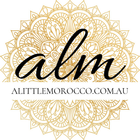ALM Style Guide | "Is it a REAL Moroccan rug?"
So you have your eye on a rug. The website you've been scouring through says this wonderful rug is a "Moroccan styled rug" with stunning "Moroccan patterning". The rug instantly transports you to the pages of "Vogue Living" magazine where stylish interiors are littered with rugs like these, however (inserts long pause) reading on in the description, the small print tells you its made in China.
Hold on there, made in China, India, Vietnam, insert whichever locale calls to hand. Begs one to ask, how can it be a "Moroccan rug" if its made in China That's exactly right, if its not from there, then its really not from there.

Moroccan rugs have an essence and intrinsic value to them that reproduced imitations can not replicate. It may look like a "pattern" that is Moroccan, but if you've ever experienced the beauty of a genuine Berber wool rug under your feet, then you know exactly what I mean when I say, there is no comparison to the real thing.
Quite simply, a Moroccan rug is a Moroccan rug. Its not a style its a location that lets you say a rug is a Moroccan rug. Beware of those portraying to be otherwise as you may like the rug, but for authenticities sake, you want the real thing.
"Well what is the real thing you say?". There's so many techniques that manufacturers use today to give you that "look" that Moroccan rugs have become synonymous with, using machines they're able to replicate patterns, colours and styles and even give it a vintage, hand knotted texture. But they are never the same. Infact comparing a real Moroccan rug, with an imitation rug you will quickly see and "FEEL" the difference.
The life essence that oozes from a handmade, Moroccan rug is worlds apart from a machined replica.
For instance the black diamonds of the classic Beni Ourain, is derived from black Berber wool, with no chemical dyes or man made fibers used.

Boujaad and Zemmour rugs, are famous for there beautifully rich tones derived from foods such as pomegranates, beets and berries and even from henna or flora that is sourced from the lands and crops of the regions they're made.

There's nothing more regional then a Moroccan rug, quite often the various styles are named after the specific regions they are made.
In the colder harsher climates you will find the thicker pile rugs such a Beni Ourain and Azilal rugs and in areas where the temperatures soar such as the desert scapes, you'll find the lighter flatweave kilim style ones such as Zanafi rugs.
And for those rugs made for pure necessity and a touch of whimsy, you will usually find Boucherouite rugs, which are made all over Morocco.

With this understanding it is then a strange concept to grasp a rug being titled as a "Moroccan Style Rug" knowing replicas are from a place other then Morocco.
To help you select the right rug, here's a few pointers to help you "Pick a real Moroccan Rug"...
KILIM RUGS
These are handwoven flat weave rugs and can come from many regions of Morocco. The technique usually uses geometric detailed Berber patterning which is often a way of discerning where it is made. Colours can also span from black and white neutrals such as Zanafi style rugs, to bright rich reds and even pastel toned newer style flatweave Boucherouite rag textile rugs.

Kilims have a low pile and yet can still be very soft and supple underfoot. Usually made of wool, vintage kilim rugs are sometimes repurposed as "kilim cushions". Infact you would've been living under a rock if you haven't seen how popular these gorgeous cushions and rugs have become as favourite additions to the Transitional, Mid-century Modern or Bohemian Chic interiors.
Boucherouite Rugs
These are usually hand-knotted rugs and are made all over Morocco. The materials used are often recycled clothing and other such textiles. Often the maker will make a rug from a loved ones clothing to give it special significance.
As a rug, these are the most accessible as they are made as an everyday rug and often from humble means, however its the bright colours and whimsical patterns that make these rugs a consistent favourite to give an interior a pop of colour.
Beni Ourain Rugs
These are possibly the most well known of the various Moroccan rugs. Often called just a Beni rug or Berber rug, the distinctive monotone black and white palate is as pure a rug as they come.
Originally made to be bedding, blankets or seating, the soft thick pile has lead this rug to be nicknamed "The Most Comfortable Rug In The World".
Touted since the 1930s as an Architects rug of choice, it still has that same impact and recently has become the style of rug most imitated by mass manufacturing.

Above, Frank Lloyd Wright designed home from the 1930s.
Authenticity is a challenging aim, with factors such as pricing, accessibility and look, paying importance upon the decision to purchase a rug. Its after all an investment and you want to be sure your getting something that ticks ALL your boxes.
But with a real Moroccan rug, it actually appreciates in value as it ages. With vintage rugs becoming more sought after and prized then newly made ones.
Seek the real deal out, you really wont regret it.



